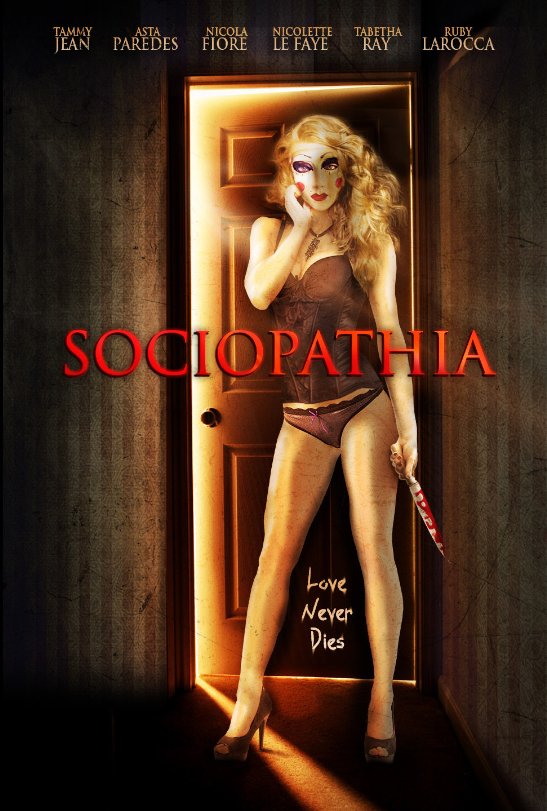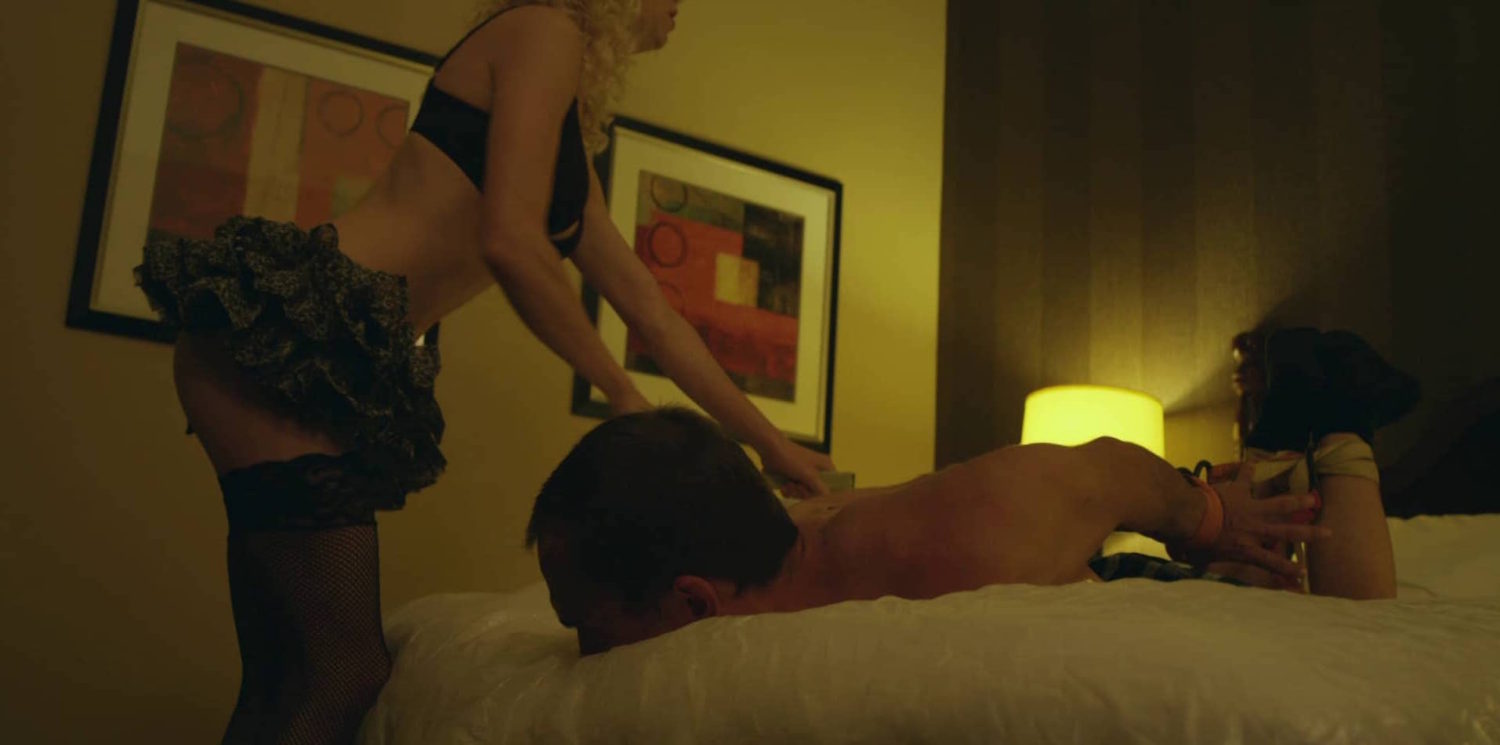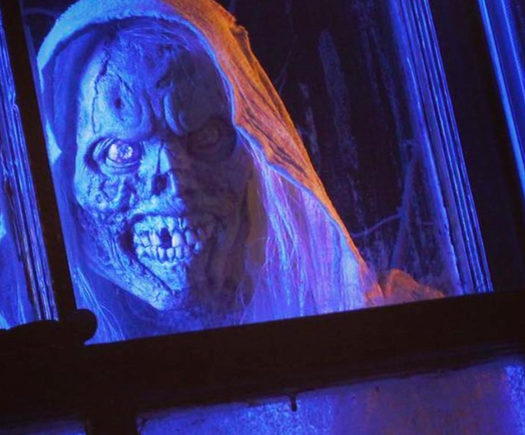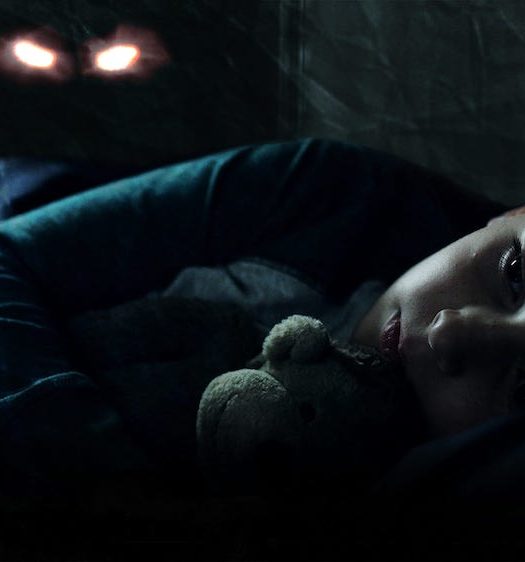Sociopathia is a film co-director and co-writer Ruby LaRocca once described as Maniac meets American Mary. She based her main character off one of her close friends (which is actually terrifying if you’ve seen the movie). With Sociopathia Ruby wants to make the point that “some people are just crazy”. That regardless of background, or economic status, inside the most mundane looking person, can lurk a killer.
I’ll admit this right up front, when I did my review for Sociopathia I had almost no idea who Ruby was, so when I got the opportunity to do a follow up interview with her and co-star Asta Paredes I was genuinely intrigued. I already knew of Asta from her role in Return to Nuke ’Em High. She’s obviously a talented actress, and when she speaks of her craft she does so with a complexity and depth I wish all actors did. Asta takes the portrayal of her characters seriously, you can hear it in her voice when she speaks, and looks to truly push herself beyond convention when working through their motivations. That’s not to say Ruby LaRocca doesn’t. Ruby exudes a jubilant confidence of someone who has over 70 acting credits under her belt. She’s exuberant and insightful and a real joy to speak with. One of the first things Ruby did when we spoke was warn me that she likes to say “weird things” and then asked me if it was okay to curse. When I said sure, she fires back with “Oh fuck yes!” So oh fuck yes, I hope you enjoy our conversation about Sociopathia.
February is Women in Horror Month, being two females in a genre that’s been historically made by men and for men, what keeps the two of you coming back to the horror genre?
Oh I love it, I don’t think of it as a male or female thing, for me I just love blood, and I love awesome effects, and you can be very creative in the horror genre and in like a rom-com you can’t, it’s pretty straightforward, in horror you can play around with all genres. But I also love blood and violence. I don’t do special effects but it’s amazing to me. I mean the first movie I ever saw was A Nightmare on Elm Street. I was five, I stole my older brother’s VHS, a copy of it, and snuck into the family room at night to watched it alone and didn’t sleep for a month. From there I was hooked, I wanted it all the time, the blood and being scared, it was great, and as an adult watching it it’s still scary to me as a concept. It’s totally fucking scary like dying in your sleep, you have to sleep, you cannot get away.
Ruby, this is your first feature film, congratulations, you previously directed the short film Belated By Valentine’s Lover, how different was this experience?
Belated by Valentine’s Lover was a very small production. It was the first thing I ever directed, but not the first thing I ever did behind the camera. Since I started acting I also started doing anything and everything I could on a crew as well, to try and learn as much as I could about filmmaking hands on. We shot it in my house, and at the park a block away from my house. The crew was so small that all the crew members ended up being in the movie at one point or another. That’s why when you watch the credits, each person has multiple credits, and everyone worked for free, everyone! Also, there was no sound, only my voice over, and being it was all my friends at my house, we didn’t have any time or “mess” restrictions that you might encounter when shooting in another location or renting out someone’s house you don’t know, to shoot in. So all in all, Belated was almost the exact opposite experience of Sociopathia. Even with post, for Belated I was there for every second of editing and any kind of post production and I never tried getting distro for it. It did play at festivals all around the world and I sold copies I made myself of it at conventions, but that’s it. With Sociopathia it would have been impossible for me to be there for every second of post because Rich and I live 3,000 miles apart. I must give him an amazing amount of adoration for teaching himself to edit so he could edit Sociopathia himself. I know he lost a lot of sleep because of that but ultimately it is a better movie because one of the directors edited it as well.
Do you see yourself making more feature films?
I definitely see myself writing and directing more shorts and features. I want to go back to basics and have a very small crew who are all friends, and do a few shorts. I also want to do more features and I feel like I learned so much shooting Sociopathia. Again, even on a feature I’d like to make it easier, although it’s never easy, but I’d like to have more time at the very least, and if I can, use some of the same actors. Anyone who knows me knows I love John Waters, and there’s something so special about working with the same people over and over again. You become family and completely trust each other. I love that feeling.
Asta, you play Kat, who’s obviously not a sociopath, but she’s not without her own stability issues, what did you see in Kat when you took the role?
Well, when Ruby and Rich sent me the script and I read through it, part of the reason that I joined the project in general was, I’m usually drawn to characters that explore something that I’d like to explore as a person, and especially coming off of my other feature role in Return to Nuke ’Em High as a kind of more tough and assertive person it would be kind of fun to be a more flighty vulnerable person, who’s so indecisive and so millennial neurotic, that she basically can’t help herself in this situation. In a way it was a weird balance for me because reading the script and understanding what the narrative was, I had to realize that my character was essentially the antagonist. If you go from the perspective and if you go from the idea that this murderer is the protagonist, and take away the negative connotation of murder, basically I tease the idea of redemption to her and then I take it away and I disturb her everyday life.
I really enjoyed seeing Kat’s relationship with Mara blossom; the bond between them was believably awkward and fresh but you could tell there was a spark there. How much work does a rapport like that take or did it come naturally?
One thing I’ve always tried to do when I have a scene partner is endow them with the greatness I want the audience to see. And I think that kind of puts off this spark and it’s important to see opposites attracting, as well as people with similar work drive, and all that. In a way I tried to convey a sort of 80s makeover style, like trying to amp it up to impress her with my wardrobe. The work just comes from wanting to convey enough of the desire because that’s leading your objective to that person and why they’re going to mess with them. Like why I’m going to mess with her? Well I find her interesting.
Kat comes off as a bit needy throughout the film, and being needy with Mara, someone who is trying to keep this dark twisted side of herself a secret, is frustrating, so why do you think she bother? Is she just lonely?
I think Kat is a very lonely character, and I think that like a moth to a flame, I think she is attracted to something about Mara which is essentially the same thing that’s going to hurt her. And I think some people get the love life that they want. You get what you want, and I think in some ways Kat is very much like her animal, in the sense that she is just reckless and needy and perhaps likes to have quick affection, and if things get too complicated then she likes to move on, but she goes for the rush, she goes for the immediate drug high, the adrenaline of a tryst. She doesn’t think things through.
You mentioned you’ve done previous work on Return to Nuke ’Em High Volume 1 & 2, you often play sexually liberated females, what attracts you to these types of characters?
Well I guess I’m attracted to those characters because they’re not as hopeless in talking about the current patriarchal nature of society. You know Kat and Crissy [Return to Nuke ‘Em High] are very different as far as the way they handle their love and their virtues, But both of them don’t feel helpless in this way of like trying to impress a guy, you know, I try not to think of them as two different lesbian characters, I just think of them as trying to make sexuality not the conversation as much, I think when women become objects of desire for men, it becomes a bigger objectification scale, when they’re objects of desire to each other or if they’re more open in their sexually, I think they’re more interesting, more fearless.
Ruby, central to the story is Mara’s relationships with her living dolls, it’s also one of my favorite aspects of the film. Ruby, do you feel like you did justice to what you had in mind?
Of course going back and watching something you made, you always think I wish we had done this or that, but I do think we captured the most important elements. I would have loved to have been able to show her spending happy time with her living dolls, like in Maniac or May, but that is just me. I don’t know how much an audience would enjoy that. It’s very very hard to show everything that’s in your head and still keep an audience entertained.
Mara’s home is almost a character unto itself, it does a lot to set the tone for the film, how much work did it take to get it just right?
Mara’s home is very much a character and that was definitely on purpose. One of my favorite horror movies is Texas Chainsaw Massacre and that house is a character. I was fortunate enough to meet Bob Burns, who did all the fx on TCM including making the leatherface mask and all the bones were his and from his house! So I definitely wanted the same thing and brought all my dead things in jars, creepy baby doll head collection, and even clothes I thought Mara would wear or dress her dolls up in. It definitely took a lot of work because Rich and I had a vision but we also had a million other things to do, so it was very difficult explaining to other people how it should look. Most of the time we were the ones moving stuff around right before shooting a scene to try and make it as perfect as we could but something always gets sacrificed. That’s just a normal day on any film set. Rollin’ with the punches!

































